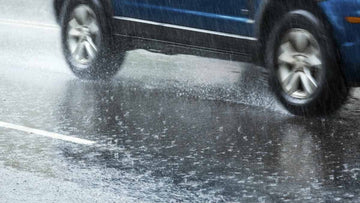
Discover everything you need to know about aquaplaning and how to steer clear of it.
Losing control of your vehicle can be terrifying. If you've ever felt your car sliding along a waterlogged road, you've probably encountered aquaplaning. Understanding how to handle this situation can be the key to avoiding accidents.
Aquaplaning, also known as hydroplaning, occurs when a layer of water forms between the road and your car's tires, causing a loss of traction. This means your tires are essentially floating on water rather than gripping the road surface. Until traction is restored, your car may be unable to steer, brake, or accelerate, putting you at risk of losing control.
Aquaplaning typically occurs when there's significant surface water on the road, often due to heavy rainfall or poor drainage. Factors like tire width, pressure, tread depth, vehicle speed, and weight can all influence the likelihood of aquaplaning.
You might not immediately recognize when your car is aquaplaning, but there are signs to watch for, such as a lighter steering feel, swerving or drifting, unresponsive steering or brakes, and revving or spinning wheels.
If you find yourself aquaplaning, it's crucial to stay calm and avoid sudden maneuvers that could worsen the situation. Instead, gently ease off the accelerator, turn off cruise control, keep the car pointed straight, and avoid slamming on the brakes.
Preventing aquaplaning starts with responsible driving and being mindful of road conditions. Slow down, especially near puddles or flowing water, and ensure your vehicle is properly maintained with adequate tire tread, functioning wipers, and aligned headlights.
To sum up:
- Maintain adequate tire tread depth (above the legal minimum of 1.6mm, with a recommendation to change tires at 3mm).
- Avoid driving through deep puddles or fast-flowing water.
- Ensure your wipers and headlights are in good working condition.
- Steer clear of sudden steering or heavy braking.
- Slow down, especially in wet or slippery conditions, as posted speed limits are for ideal weather.
